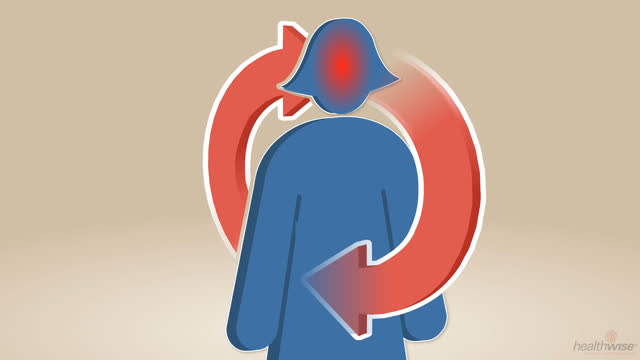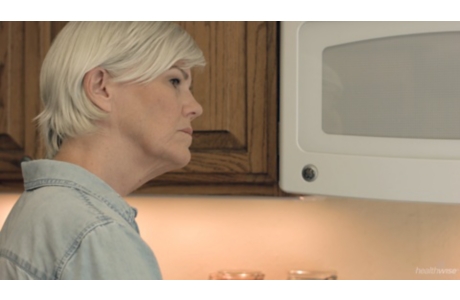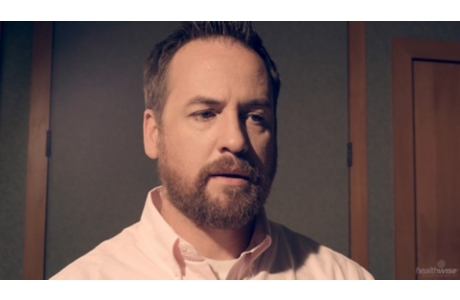Top of the pageActionset
Chronic Pain: Using Healthy Thinking
Introduction
Living with pain can be hard, especially if it’s long-term—or chronic—pain. Chronic pain is pain that lasts for 3 months or longer. It can make you sleep poorly, feel tired and irritable, and have a hard time being active or working. It may strain your relationships with loved ones too, making it hard to be the kind of friend, parent, or partner you want to be. You may feel stressed or get depressed or anxious. And these feelings may make your pain worse, because they can make it harder to manage your pain.
Learning how to control your pain can help with all of these things. In most cases, chronic pain can be managed so that you can get on with your life and do your daily activities. One way you can help manage and cope with your pain is through healthy thinking. Your thoughts are something you can control. You can learn techniques to make your thoughts more helpful and encouraging.
- Cognitive-behavioral therapy, also called CBT, is a way to help you stay well and cope with pain by changing how you think. And how you think affects how you feel. Negative thoughts can make stress and pain worse. Healthy thinking can help.
- CBT is often used to help people think in a healthier, more balanced way. The goal is to change the way you think about pain so that your body and mind respond better when you have pain.
- Another technique, called acceptance and commitment therapy (ACT), helps you cope with chronic pain by helping you learn to accept negative feelings. You learn to base your choices and actions on your personal values, rather than on negative feelings.
- Healthy thinking can take away barriers to being physically active, such as discouraging thoughts. This helps because pain can also improve with physical activity, such as walking and swimming.
- Changing your thinking will take some time. Be patient with yourself as you learn healthy thinking. It may not feel right at first, because you are trying out something new. But with daily practice, it will get easier and feel more natural. And it’s something you can start doing today.
How can you use healthy thinking to cope with pain?
Many people work with a therapist or a counselor to learn CBT techniques. But you also can practice some of them on your own.
Working on your own or with a counselor, you can practice these three steps:
- Stop. Notice your thoughts. When you notice a negative thought, stop it in its tracks and write it down.
- Ask. Look at that thought and ask yourself whether it is helpful or unhelpful.
- Choose. Choose a new, helpful thought to replace a negative one. Ask yourself: What effect does believing this thought have on me? What might happen if I tried to believe the more healthy thought?
The goal is to have encouraging thoughts come naturally. It may take some time to change the way you think. You will need to practice healthy thinking every day.
Notice and stop your thoughts
The first step is to notice and stop your negative thoughts or “self-talk.” Self-talk is what you think and believe about yourself and your experiences. It’s like a running commentary in your head. Your self-talk may be rational and helpful. Or it may be negative and not helpful.
Ask about your thoughts
The next step is to ask yourself whether your thoughts are helpful or unhelpful. Does the evidence support your negative thought? Some of your self-talk may be true. Or it may be partly true but exaggerated. Here are a few types of unhelpful thoughts to look for:
- Focusing on the negative: This is sometimes called filtering. You filter out the good and focus only on the bad. Example: “I’ve had some good days, but having one good day doesn’t mean that I will have more.” Reality: Just like life, not all days are good. But that doesn’t mean every day will be bad. Having pain-free days means that you are capable of having them, and more lie ahead.
- Should: People sometimes have set ideas about how they “should” act. If you hear yourself saying that you or other people “should,” “ought to,” or “have to” do something, then you might be setting yourself up to feel bad. Example: “If I take all my medicines as prescribed, then I should have no pain.” Reality: There’s nothing wrong with expecting that medicines should work. But managing chronic pain sometimes takes many different resources, including medicines, to get the best results.
- Overgeneralizing: This is taking one example and saying it’s true for everything. Look for words such as “never” and “always.” Example: “There’s nothing I can do to help the pain.” Reality: On some days, pain may seem overwhelming. But dwelling on that causes you to focus on the pain, which can make it worse. Instead, try to focus on ways you can work with the pain. What was different in previous times when the pain wasn’t so consuming? How did you cope then? Can some of those strategies help?
- All-or-nothing thinking: This is also called black-or-white thinking. Example: “I have a hard time sitting for very long, so I can’t go back to work.” Reality: With some creative thinking, you may be able to work out an alternative seating arrangement or a flexible work schedule.
Choose your thoughts
The next step is to choose a more helpful thought to replace the unhelpful one.
Keeping a journal of your thoughts is one of the best ways to practice stopping, asking, and choosing your thoughts. It makes you aware of your self-talk. Write down any negative or unhelpful thoughts you had during the day. If you think you might not remember at the end of your day, keep a notepad with you so you can write down any unhelpful thoughts as they happen. Then write down a helpful message to correct the unhelpful thought.
With daily practice, more accurate and helpful thoughts will soon come naturally to you.
But there may be some truth in some of your negative thoughts. You may have some things you want to work on. If you didn’t perform as well as you would like on something, write that down. You can work on a plan to correct or improve that area.
If you want, you also could write down what kind of unhelpful thought you had. Journal entries might look something like this:
|
Stop your negative thought |
Ask what type of negative thought you had |
Choose an accurate, helpful thought |
|---|---|---|
|
“I haven’t had too much pain today, but I know that won’t last for long.” |
Focusing on negative |
“Sure, not all days will be pain-free. But I’ve had some days without pain lately, so I know that not every day will be painful.” |
|
“I’ve taken all my medicines like I’m supposed to, so I should have no pain at all.” |
Should |
“Medicines help a lot, but they may not solve the problem alone. Using them along with healthy thinking gives me the best chance of coping with my pain.” |
|
“There’s really nothing I can do to help my pain.” |
Overgeneralizing |
“Some days my pain may feel tough to manage, but there have been days when it has been better. And there are things that I can do to help my pain.” |
|
“Sitting for more than 2 hours is very hard, so there’s no way I can ever go back to my job.” |
All or nothing |
“I may not be able to return to my exact job, but I can be open to other arrangements that will allow me to continue to work in a similar way.” |
Credits
Current as of: March 28, 2019
Author: Healthwise Staff
Medical Review:Catherine Devany Serio, PhD – Psychology, Behavioral Health & Martin J. Gabica, MD – Family Medicine & Steven E. Locke, MD – Psychiatry, Behavioral Health
Current as of: March 28, 2019
Author: Healthwise Staff
Medical Review:Catherine Devany Serio, PhD – Psychology, Behavioral Health & Martin J. Gabica, MD – Family Medicine & Steven E. Locke, MD – Psychiatry, Behavioral Health
This information does not replace the advice of a doctor. Healthwise, Incorporated, disclaims any warranty or liability for your use of this information. Your use of this information means that you agree to the Terms of Use. Learn how we develop our content.





